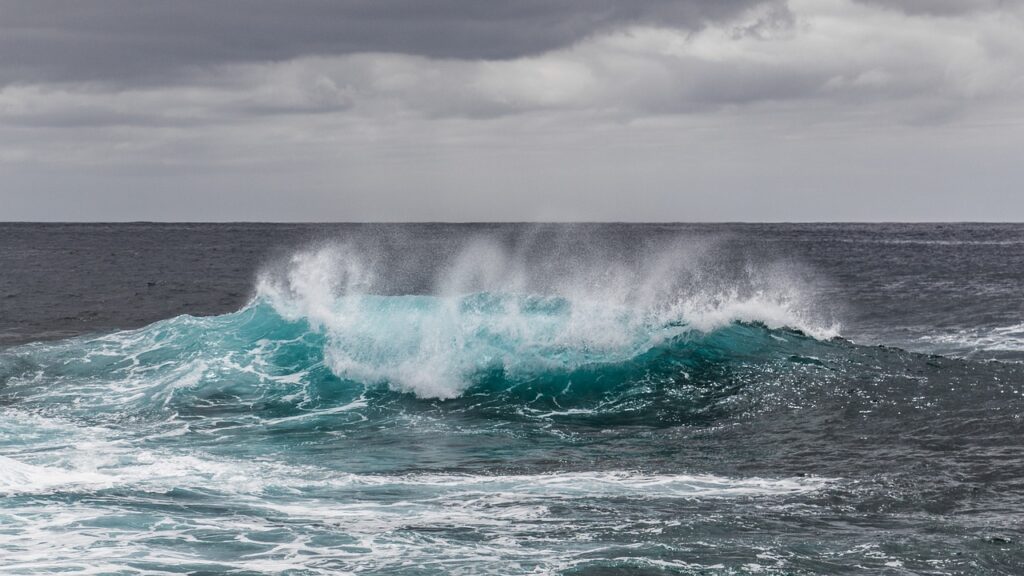The Pacific Ocean, the largest and deepest ocean on Earth, is leaking. Scientists have discovered a leak in the ocean floor off the coast of Oregon, and they are still working to understand its implications. The leak is spewing a warm, chemically distinct fluid that is thought to be tectonic lubricant. This is the first known leak of its kind in the Pacific Ocean, and it is raising concerns about the potential for earthquakes and other geological events.

What is tectonic lubricant?
Tectonic lubricant is a fluid that helps to reduce friction between tectonic plates. Tectonic plates are large slabs of rock that make up the Earth’s crust. They are constantly moving, and this movement can cause earthquakes and other geological events. Tectonic lubricant helps to prevent these events by reducing friction between the plates.
Why is the leak a concern?
The leak is a concern because it could be a sign that the Cascadia Subduction Zone, a major fault line that runs along the Pacific Northwest coast, is becoming unstable. The Cascadia Subduction Zone is capable of producing a magnitude 9.0 earthquake, which would have devastating consequences for the region.
What are the potential implications of the leak?
The potential implications of the leak are still unknown. However, scientists are concerned that it could trigger a major earthquake on the Cascadia Subduction Zone. They are also concerned about the environmental impact of the leak, as the fluid could contain harmful chemicals.
Recent updates
In a recent study published in the journal Science Advances, scientists analyzed samples of the fluid from the leak. They found that the fluid is much warmer than the surrounding seawater, and that it contains high levels of methane. These findings suggest that the leak is coming from a deep source, possibly the Cascadia Subduction Zone.
The scientists also found that the fluid contains high levels of dissolved solids, including salts and minerals. This suggests that the fluid is interacting with the rocks of the seafloor, which could be weakening them and making them more susceptible to earthquakes.
What are scientists doing about it?
Scientists are continuing to study the leak and its potential implications. They are also working to develop early warning systems for earthquakes and other geological events.
Potential implications for earthquakes
The Pacific Ocean leak could have a number of potential implications for earthquakes in the Pacific Northwest. One possibility is that the leak could trigger a major earthquake on the Cascadia Subduction Zone. The Cascadia Subduction Zone is a major fault line that runs along the Pacific Northwest coast. It is capable of producing a magnitude 9.0 earthquake, which would have devastating consequences for the region.
Another possibility is that the leak could increase the frequency of smaller earthquakes in the Pacific Northwest. Smaller earthquakes are less likely to cause significant damage, but they can still be disruptive and unsettling.
Potential implications for the environment
The Pacific Ocean leak could also have a number of potential implications for the environment. One concern is that the fluid from the leak could contain harmful chemicals. These chemicals could pollute the ocean and harm marine life.
Another concern is that the leak could disrupt the food chain in the Pacific Ocean. The fluid from the leak could make it difficult for phytoplankton to grow. Phytoplankton are tiny plants that are at the base of the marine food chain. If phytoplankton levels decline, it could have a ripple effect throughout the marine ecosystem.
Conclusion
The Pacific Ocean leak is a serious concern. Scientists are still working to understand its implications, but they are worried that it could trigger a major earthquake on the Cascadia Subduction Zone. The leak is also a potential environmental hazard.
It is important to note that the risk of an earthquake on the Cascadia Subduction Zone is already high, regardless of the leak. However, the leak could increase the risk of an earthquake occurring in the near future.
Residents of the Pacific Northwest should be prepared for the possibility of a major earthquake. They should have an emergency plan in place and know what to do if an earthquake occurs.
Additional information
In addition to the information above, here are some additional details about the Pacific Ocean leak and its potential implications:
- The leak is located about 80 kilometers off the coast of Oregon, near the Cascadia Subduction Zone.
- The leak is spewing a fluid that is much warmer than the surrounding seawater.
- The fluid contains high levels of methane and dissolved solids.
- Scientists are still unsure what is causing the leak.
- The leak could have a number of potential implications for earthquakes and the environment in the Pacific Northwest.